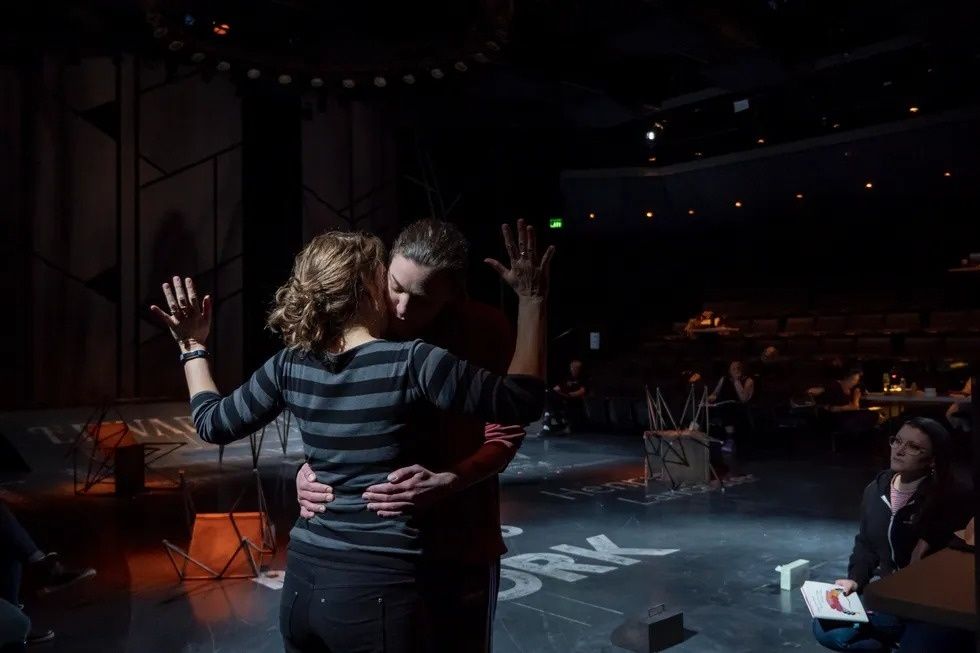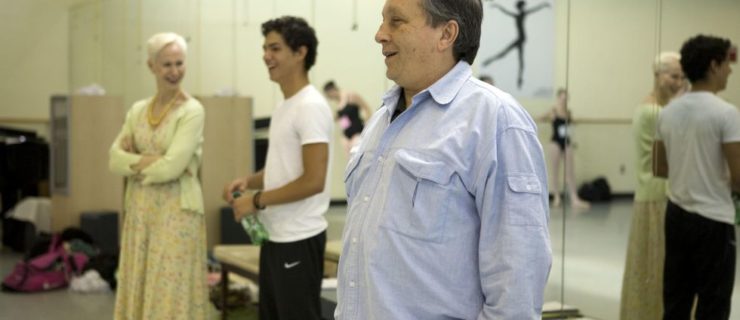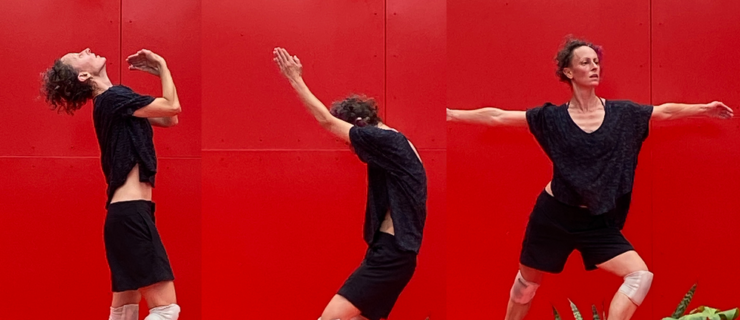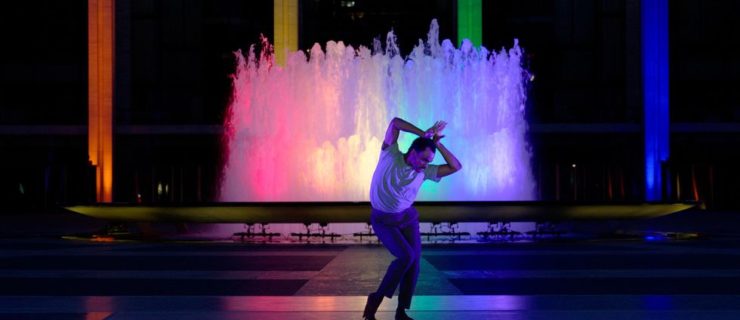What Intimacy Coordinators Could Bring to How Love and Sex Are Portrayed in Dance
In October 2018, HBO made news with an announcement that it would engage specialists to ensure sex scenes in every movie and series it produced were handled safely and professionally. Some characterized the network’s new policy as a move to stem the tide of #MeToo allegations in entertainment, proof themselves that the industry had failed to self-regulate.
In the two years since, intimacy coordinators have become increasingly present behind the camera; performers have grown more comfortable stipulating they be hired proactively, too.
The circumstances that require intimacy coordination on set—called “intimacy direction” in live theater—tend to be self-evident. “We’re talking about any instance of nudity, simulated sex or deep physical intimacy,” says Claire Warden, creative team member at leading industry group Intimacy Directors and Coordinators.
Dance, however, is an art form that frequently involves the kind of bodily contact that, in a nondance context, would be watched extremely closely, perhaps nervously. “Deep physical intimacy” is simply the dancer’s stock-in-trade.
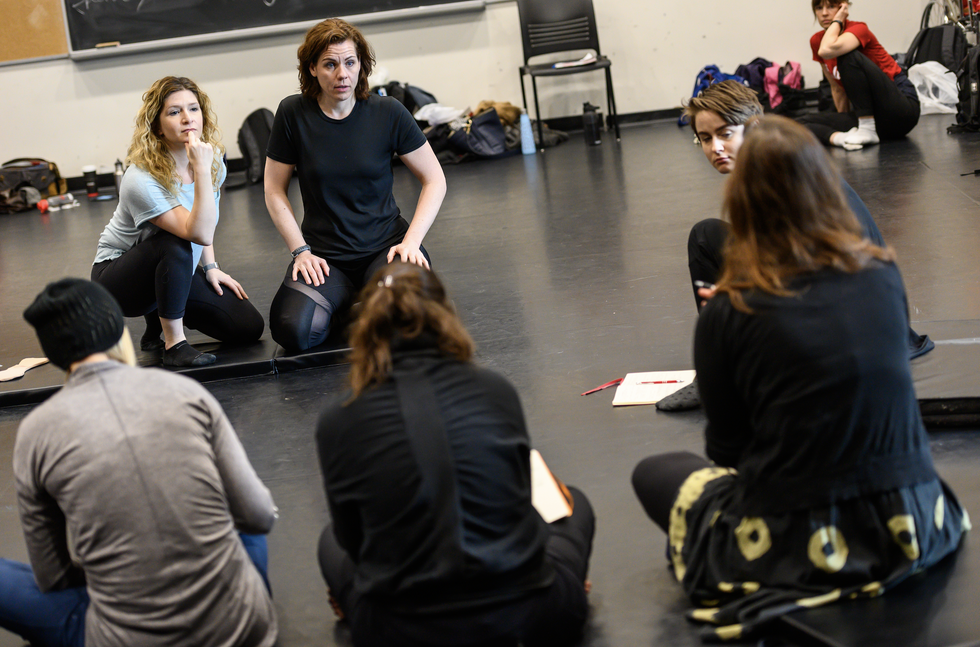
Dahlia Katz, Courtesy Warden
Despite—or perhaps because of—the fact that dancers are often nearly as comfortable with other bodies as they are with their own, it’s important to make and maintain space for honesty about personal limits and power dynamics.
“Because so much of dance is touch-based, our boundaries are really muddy,” says Sarah Lozoff, certified by IDC and resident intimacy director at both the Oregon Shakespeare Festival and RudduR Dance (to Lozoff’s knowledge the first dance-centered organization to create and fill such a role). “We explore and experiment with each other in the studio, and then maybe we change in front of each other in the dressing room, and then we hug each other goodbye.”
“In dance, there’s this implicit devotion to give your body to this form and to the teachers and mentors and choreographers who are then going to direct it and mold it and shape it,” says choreographer Faye Driscoll, who acknowledges how attractive that sense of surrender can be. “There’s an underpinning of, ‘My body isn’t just for me. My body is for this vision, this work, this thing,’ and that’s something I was very much drawn to as a dancer.”
While dancers are and should be proud of their generosity of spirit, they’re also human beings who deserve respectful treatment—especially in the workplace.
A choreographer or artistic director may be uncomfortable discussing the specifics of an intimate exchange, but shying away from doing so redirects responsibility in ways that can quickly become problematic, Lozoff points out.
“A young dancer in her first big role, let’s say it’s Juliet, should not have to bear the burden of having to raise the question, ‘So are we using our tongues for this kiss, or…?’ I don’t want to wait until the end of the day to get a list of things that you assumed,” she says. “I’m trying to facilitate healthy-enough communication so that somebody feels comfortable saying in the moment, ‘Hey, I thought we weren’t going to do it that way today. Can we try that again?’ And so someone can receive that as, ‘Oh, yeah, sorry, I totally flubbed that. Let’s go back.’ We’re human. We make mistakes.”
As an active observer, an intimacy director takes in everything happening in the room, with a keen eye for nonverbal signals. “A third party who’s not part of the dynamic whatsoever can recognize when something may not be as consensual as everyone assumes it is,” explains intimacy director Sasha Smith, who works with major theaters and storefront venues across the country.
“Most of all, our work assists in preventing sexual harassment in the workplace,” says the website for Intimacy Directors and Coordinators. With 10 staff and creative team members based across the U.S., IDC provides professional services for live and on-camera productions, as well as classes and workshops that can be applied toward an IDC certification. Five principles it calls “pillars” are the basis of IDC’s approach: consent, context, communication, choreography and closure.
“It makes a big difference if you have an intimacy director who doesn’t understand what variables exist in the dance world, who comes in and tries to overlay what they’ve learned from theater or film onto a choreographic process for concert dance,” says Lozoff. “That could potentially feel more stifling than any of us want.”
Closure practices—small rituals that formalize the end of a rehearsal or workday for clarity—can and should be specific to each ensemble’s unique dynamic, says Warden. They can be verbal or nonverbal and may or may not include contact like hand-holding or pressing palms together, although Warden and Lozoff both say they typically encourage including eye contact during these small farewells, which can even take place mid-rehearsal when going on break. “We need to be able to leave it in the studio at the end of the day and not take it home with us,” says Lozoff.
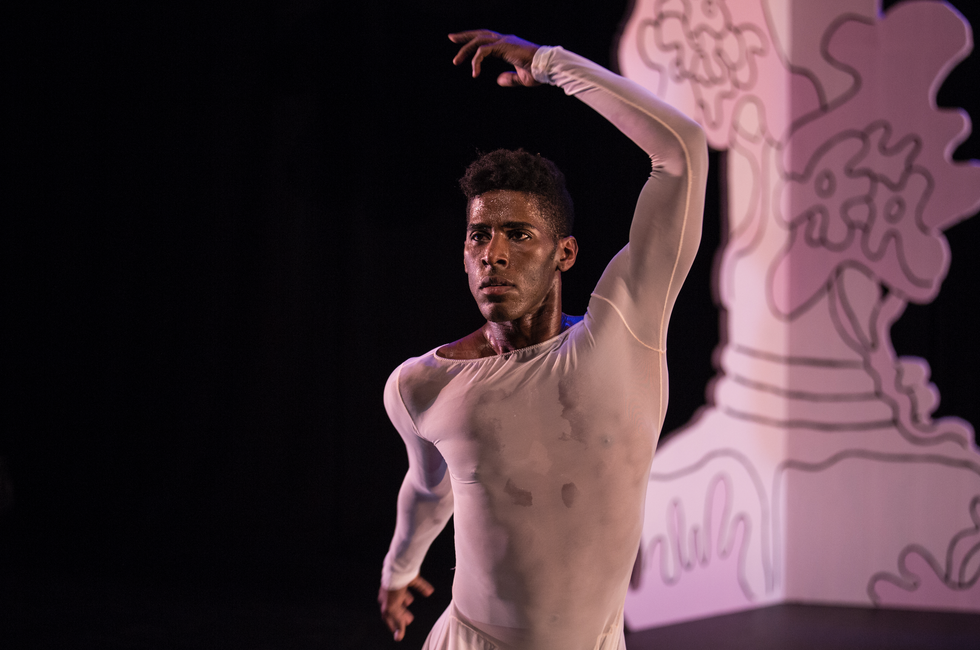
Everything Is Imaginable Maria Baranova, Courtesy Ferver
The ways sex can be abstracted or made formal in dance also complicates the matter of identifying what is and isn’t understood as “intimate,” says choreographer Jack Ferver. For a scene simulating gay sex in Ferver’s Everything is Imaginable, Martha Graham Dance Company principal Lloyd Knight and Broadway dancer Garen Scribner “were told very specifically not to emote,” Knight explains. “We just had these physical exercises we had to accomplish and that was it.” It looked like sex, but the two wore blank expressions, prompting laughter from the audience. “Our faces weren’t showing it, but our bodies really went to the extreme.”
Ferver’s rehearsals frequently began with a full hour set aside for “a lot of talk,” he says, “about how our days are going and what’s happening in our lives, while we’re stretching. Always, as part of my process, I build friendship and trust in the room.” It helps that Ferver isn’t overly precious about his creations. “When Garen and Lloyd were simulating sex I asked them, ‘What are you comfortable with?’ I’m always happy to cut anything and make up new material.”
Smith sees irony in the fact that, while nearly every moment of a dance or play is often laboriously crafted and discussed in minute detail, onstage kisses and sexual scenes are often broadly outlined or even improvised. “There’s this myth that if you choreograph it there’s no chemistry, that chemistry only happens spontaneously—which I now know from years of doing this that it can indeed be crafted through body language,” says Smith. “I use the term ‘choreography’ because it’s important that the action is repeatable. That’s a big part of the advocacy element of this work: If it’s changed then we can speak to it. It creates the language for accountability.”
In addition to leaving performers unnecessarily vulnerable to the whims of their partners and not allowing for discussions of consent beforehand, vaguely defined scenes of intimacy can derail a work’s entire narrative arc, says Warden. A moment might make sense within the context of the story if played tenderly and romantically, but it could suggest an entirely different relationship or situation if the kiss becomes too aggressive.
“We know that bodies tell stories,” says Lozoff. “When it’s spontaneous every night, you’re not only not telling the best story, you’re also not telling the most effective story.”
Smith enjoys bringing detail and specificity to onstage encounters. “Sometimes the original idea can be quite ‘vanilla,’ if you will. Part of being a designer in this work is being able to say, ‘What if we tried this, which I think will give us the same effect but not be so obvious?’ Those are my favorite conversations to have. Where can you find artistry in these little pretzels our bodies create?”
